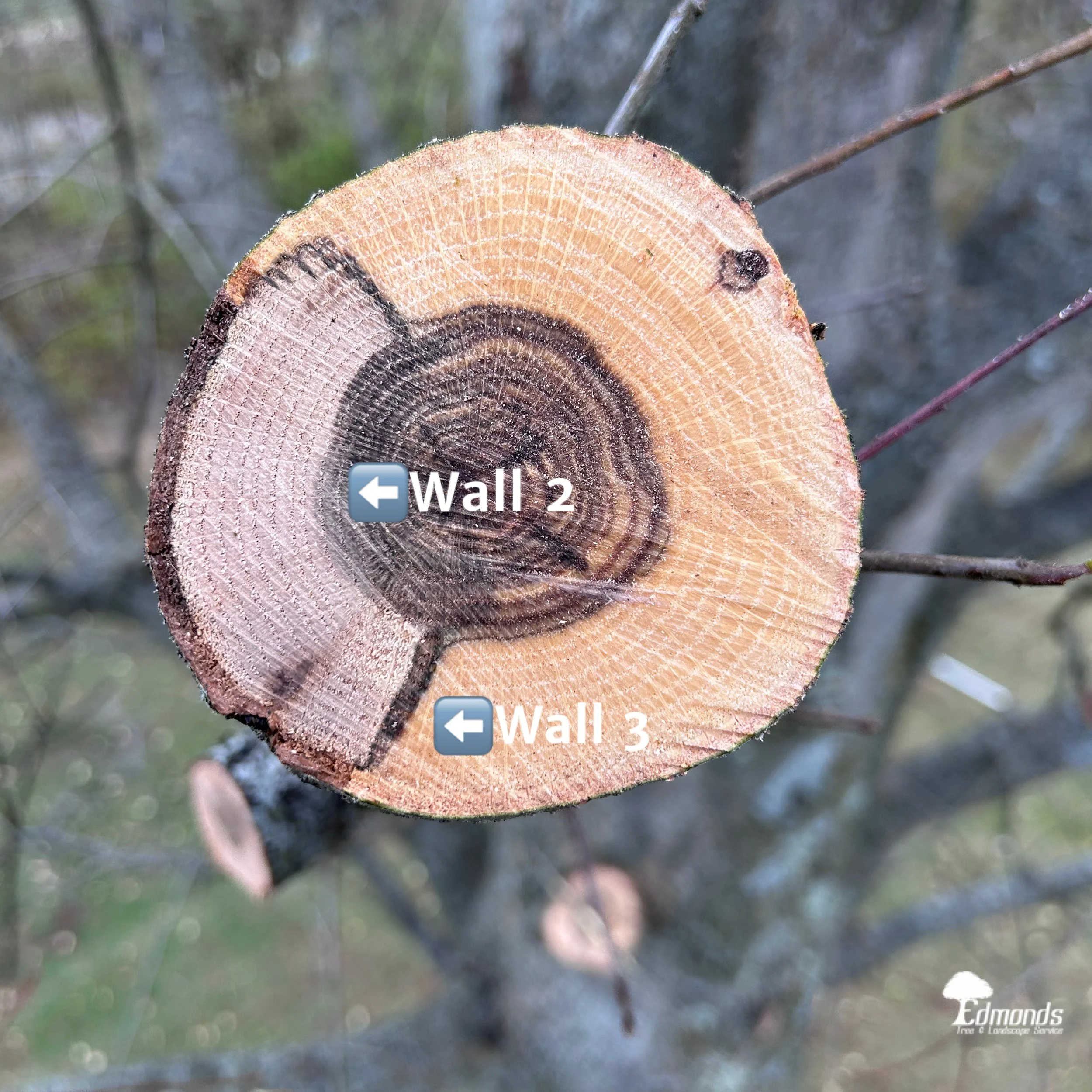Learning about CODIT in Columbus
Learn what’s happening to this Pin Oak (Quercus palustris) branch!
What you’re seeing here is CODIT—a tree’s way of protecting itself from injury or decay. Trees don’t heal like we do; instead, they “compartmentalize” the damage by creating barriers. On this branch, we can clearly see Wall 2 and Wall 3 doing their job:
Wall 2: This barrier forms along the growth rings of the tree. Think of growth rings as the tree’s annual record—each ring marks a year of its life. Wall 2 slows decay from moving inward toward the center of the branch.
Wall 3: Stops decay from spreading sideways around the branch, keeping it contained to one area.
There are two other walls at work here, even though we can’t see them:
• Wall 1: Slows the spread of decay up and down the branch.
• Wall 4: This is the tree’s long-term defense, where new growth starts to seal off the wound entirely.
Trees are incredible at protecting themselves, but proper pruning and care make a huge difference in how well they can fight off decay.
Winter is the perfect time to prune Oak trees, learn more here ( https://edmondstreeservice.com/ded-oak-wilt ) about dormant pruning to help prevent the spread of disease!
Pin Oak (Quercus palustris) branch cross section.

